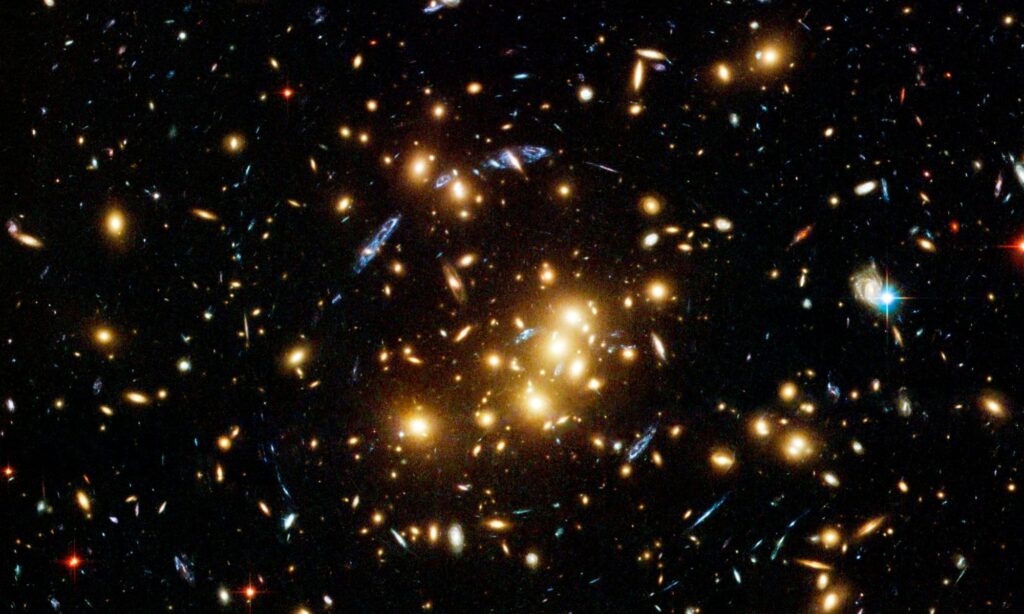
Unveiling the Mystery: Top Facts About Dark Matter
- Categories Space Science
Unveiling the Mystery: Top Facts About Dark Matter

Dark matter is one of the most mysterious forces in the universe, influencing galaxies and stars without us ever actually "seeing" it. At the SDRO Space Academy, where we focus on space and astronomy for kids, we aim to make complex topics like dark matter accessible and fun to explore.
Join us as we uncover the fascinating facts behind this unseen, yet universe-shaping force!
What Is Dark Matter?
Dark matter, a central focus in space science, remains a mystery despite its abundance. Unlike regular matter, dark matter doesn’t emit, absorb, or reflect light, making it invisible. It’s detectable only by the gravitational influence it exerts on other cosmic objects. This fascinating concept is one of many exciting topics kids explore at SDRO, where they learn to decode the universe!

Dark Matter’s Presence in the Universe
Did you know that about 27% of the universe is dark matter? Combined with dark energy, these unseen forces make up 95% of all known cosmic content, leaving ordinary matter—everything we can see and touch—as just 5%!
SDRO’s space and astronomy programs for young minds break down these big ideas into fun, digestible facts that capture kids' imaginations.
The Role of Dark Matter in Galaxy Formation
Galaxies might not exist without dark matter! Its gravitational influence acts like an invisible “glue,” providing the structure needed for galaxies and star clusters to form. At SDRO, kids dive into the amazing ways space works, seeing how dark matter serves as a cosmic architect for galaxies.
Scientists Are Searching for Dark Matter Particles: Scientists around the world are hunting for dark matter particles, known as WIMPs (Weakly Interacting Massive Particles), sterile neutrinos, and axions. Programs like SDRO help kids discover how research facilities, such as the Large Hadron Collider, are leading the charge in this search. Space and astronomy for kids means igniting curiosity to help solve the mysteries of the cosmos.

Why Is Dark Matter Invisible?
Unlike ordinary particles, dark matter particles don’t interact with light or electromagnetic forces, making them undetectable with our current tools. This fascinating invisibility is one reason dark matter is so challenging to detect. At SDRO, space and astronomy classes for kids explain these strange properties in simple, relatable ways, building young astronomers’ curiosity about invisible forces.
Gravitational Lensing: The Visible Effect of Dark Matter: Though we can’t “see” dark matter, we can observe its effect through gravitational lensing. This occurs when light from distant stars or galaxies is bent by a massive object, like a cluster with dark matter. Through SDRO’s programs, students learn how astronomers use this effect to map dark matter's presence in space.
Dark Matter Slows Cosmic Expansion: Dark matter helps slow down the universe’s expansion. While dark energy drives accelerated expansion, dark matter’s gravitational force counters it, shaping the future of the cosmos. At SDRO, our space and astronomy programs for kids teach how these cosmic forces interact, giving students a hands-on feel for real astronomical studies.
Dark Matter Could Lead to New Physics Discoveries: Dark matter challenges current scientific knowledge, and many experts believe studying it may lead to discoveries beyond the Standard Model of Physics. SDRO’s mission is to bring these big ideas into classrooms, inspiring kids to be future scientists who might one day unlock the secrets of dark matter.
Dark Matter Halos Around Galaxies: Galaxies have massive “halos” of dark matter enveloping them, contributing to their stability. These halos, detected through gravitational effects, extend far beyond visible galaxies.
Through SDRO’s interactive activities, kids learn about these hidden structures, sparking their interest in how dark matter influences everything in space.
The Connection Between Dark Matter and Dark Energy: Though distinct, dark matter and dark energy shape cosmic evolution together. Dark matter clumps together, while dark energy spreads evenly, driving the universe’s expansion.
SDRO’s space and astronomy courses for kids delve into this complex relationship in an easy-to-grasp way, making space science fun and engaging.
Dark matter may be invisible, but its impact on the cosmos is undeniable. At SDRO Space Academy, our space and astronomy for kids curriculum includes exciting subjects like dark matter, encouraging young learners to explore and ask questions about the universe’s greatest mysteries.
As scientists uncover more about dark matter, programs like ours aim to foster the next generation of explorers who could one day bring us closer to understanding this mysterious force shaping our universe.
You may also like

The Future of Space Technology: SDRO

